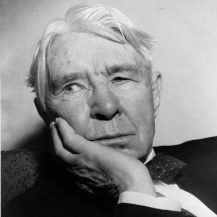The Elite in the Arts | Music
Populism vs Elitism in Bluegrass Music

Founded in the mid-1940s by Bill Monroe and his Blue Grass Boys (from which the genre eventually took its name), bluegrass is a specific type of American popular music rooted in Anglo-American and African-American string band traditions. As a professional and commercialized form of folk music, it has naturally vacillated over its history between a more populist paradigm, in which members of the folk communities that created the music play and enjoy it, and an elitist one, in which those who were not born into the music’s socio-cultural environment came to it as outsiders for artistic or academic gratification. Since the early twentieth century, scholars, folklorists, documentarians, and even musicians trained in other genres have taken a keen interest in bluegrass and its antecedents, objectifying it and radically changing it. At the same time, bluegrass and related styles have proven adaptable and resilient, maintaining their connections to the folk, non-elitist communities that still claim it as their own.
The origins of bluegrass lie in the fiddle- and banjo-based string band music used for dancing and other forms of entertainment by white and black Americans in the nineteenth century. Thus, at the beginning of the twentieth century, this was still largely a type of folk music, played and enjoyed by members of the communities that produced it. Academic interest in the music began to gain strength in the 1920s and 1930s, when the institutionalization of American folklore studies caused documentary and research projects to proliferate.

Bluegrass itself arose in the 1940s when the Kentucky mandolinist Bill Monroe developed a driving, virtuosic, and progressive approach to country string band music that featured the three-finger banjo style of band member Earl Scruggs and the intense singing of Lester Flatt and Monroe himself. The style proved immensely successful with “popular audiences,” using folk traditionalism with a hard-edged, almost jazzy, modernism.
By the early-mid-1960s, the folk revival had latched onto bluegrass as an example of what folklorist Alan Lomax called “folk music with overdrive.” The revival brought thousands of young, educated, affluent fans to this fundamentally rural music, and bluegrass was heard increasingly on college campuses and in urban nightclubs.
In the 1980s, a type of “pop bluegrass” emerged, softening the edges of the music for mainstream audiences. Chief among the new stars was Alison Krauss, one of the most Grammy-decorated artists in history, and her band Union Station. While the new wave of the popularization of bluegrass peaked with the 2000 film O, Brother, Where Art Thou? (the soundtrack of which featured Krauss and others), the dawn of the twenty-first century also brought a new level of virtuosity and refinement to this music. By 2000, bluegrass music was being taught in universities and music conservatories, as its new practitioners moved the genre toward a contemporary chamber music model. Of particular note is the 2011 album The Goat Rodeo Sessions, which brought virtuosic “newgrass” leaders Chris Thile and Stuart Duncan together with classical musicians Edgar Meyer and Yo-Yo Ma for an unclassifiable and extremely sophisticated collaboration.
To the Overview